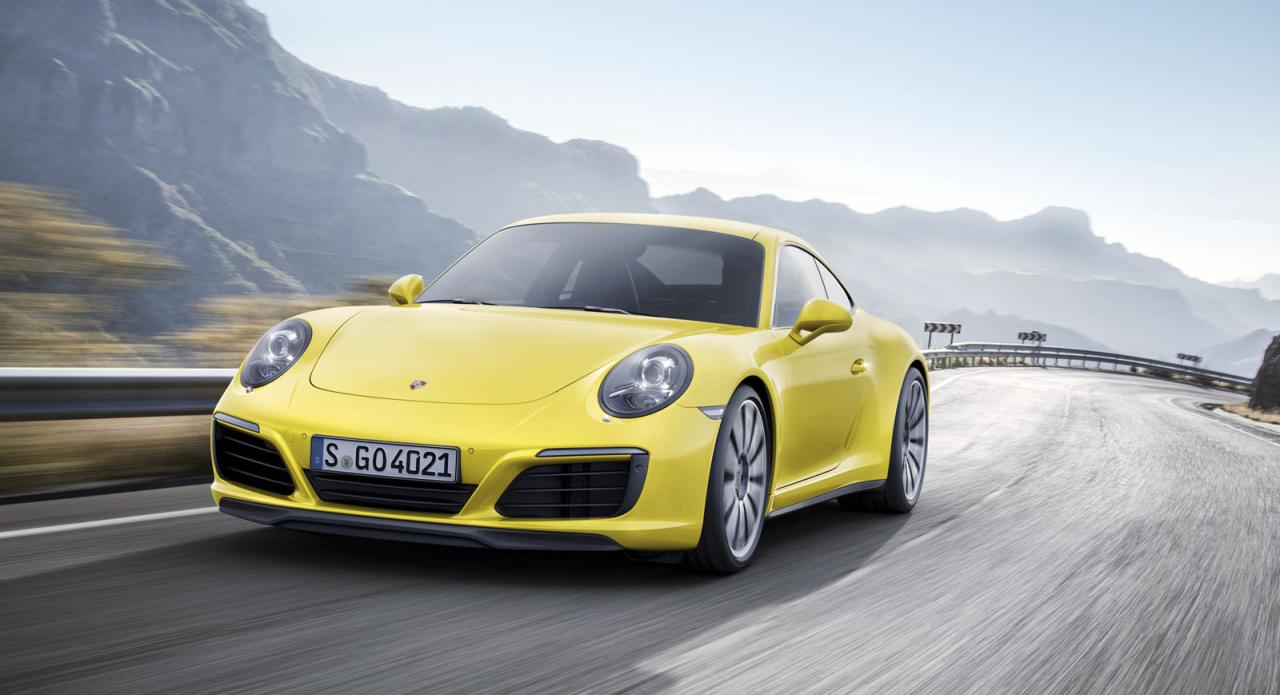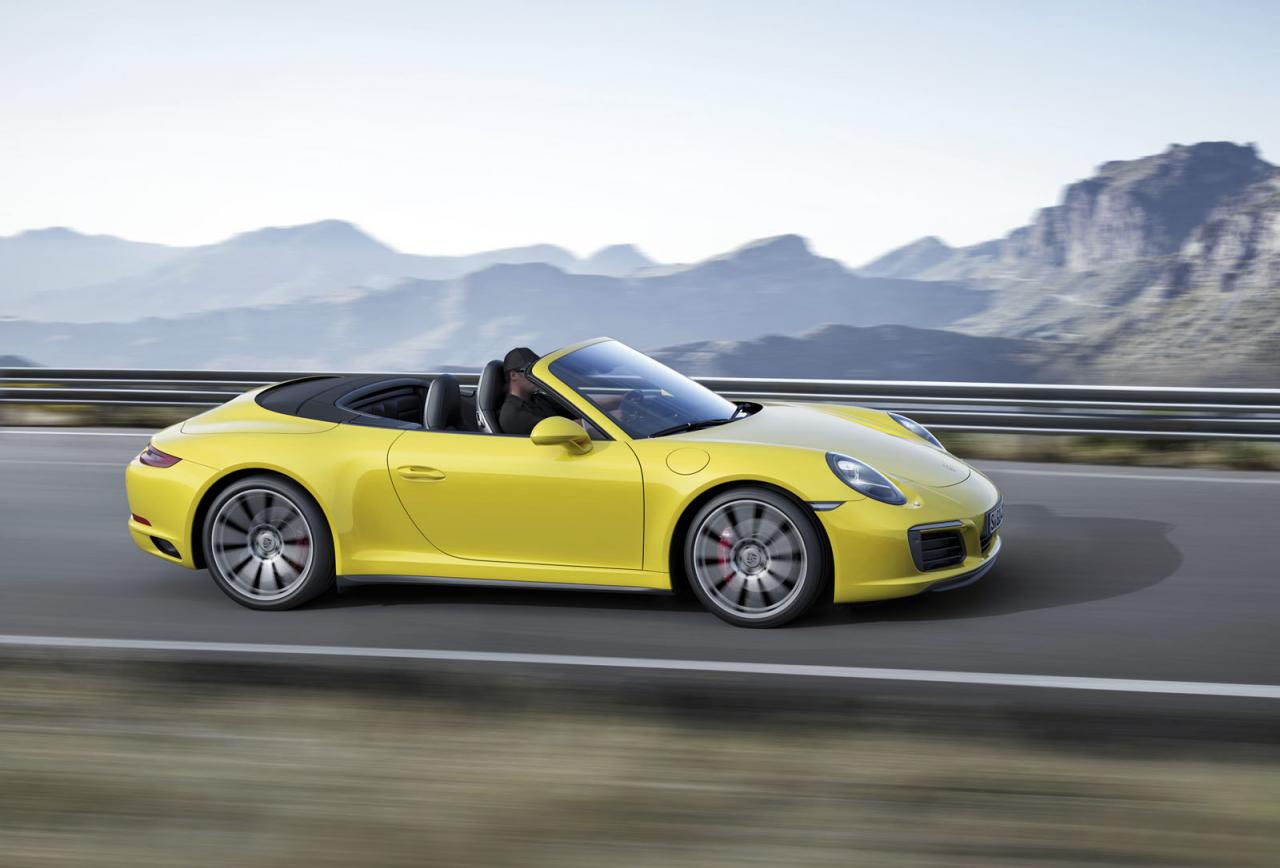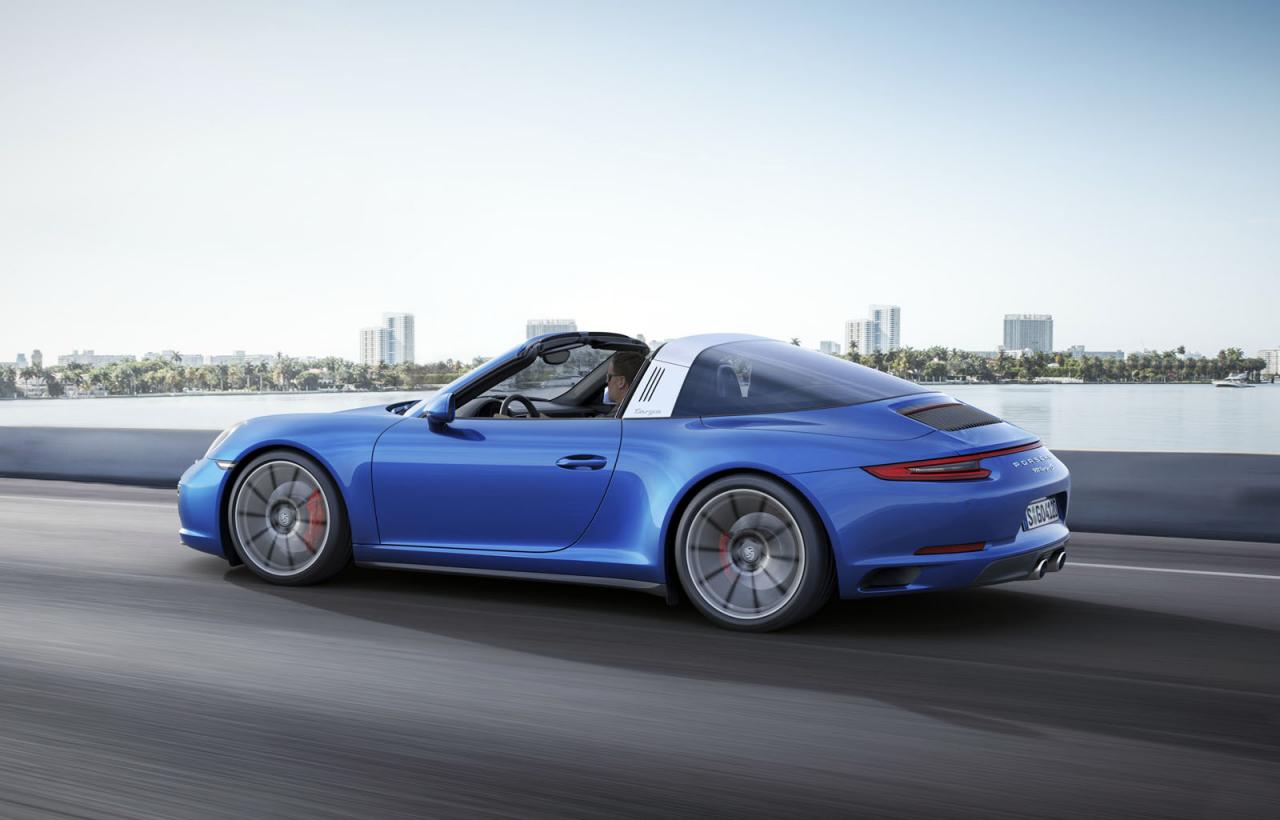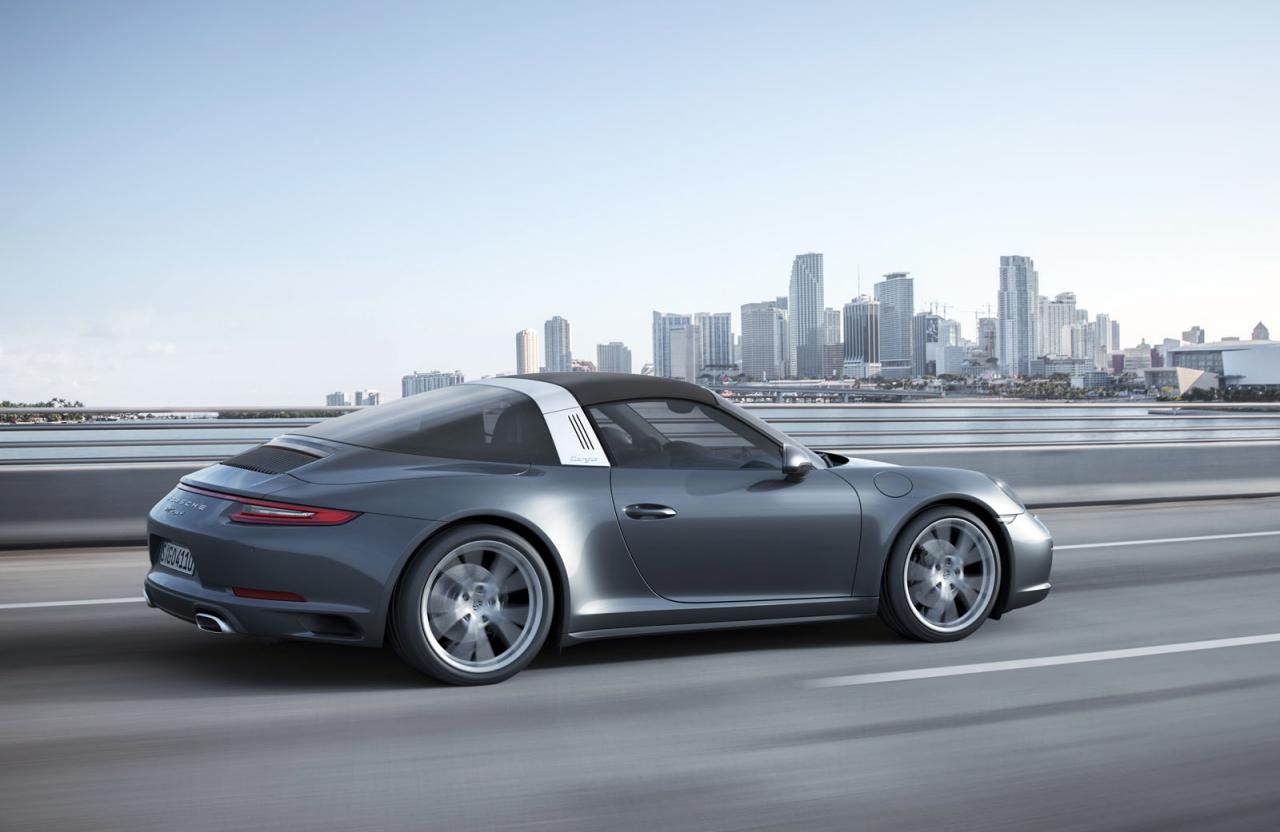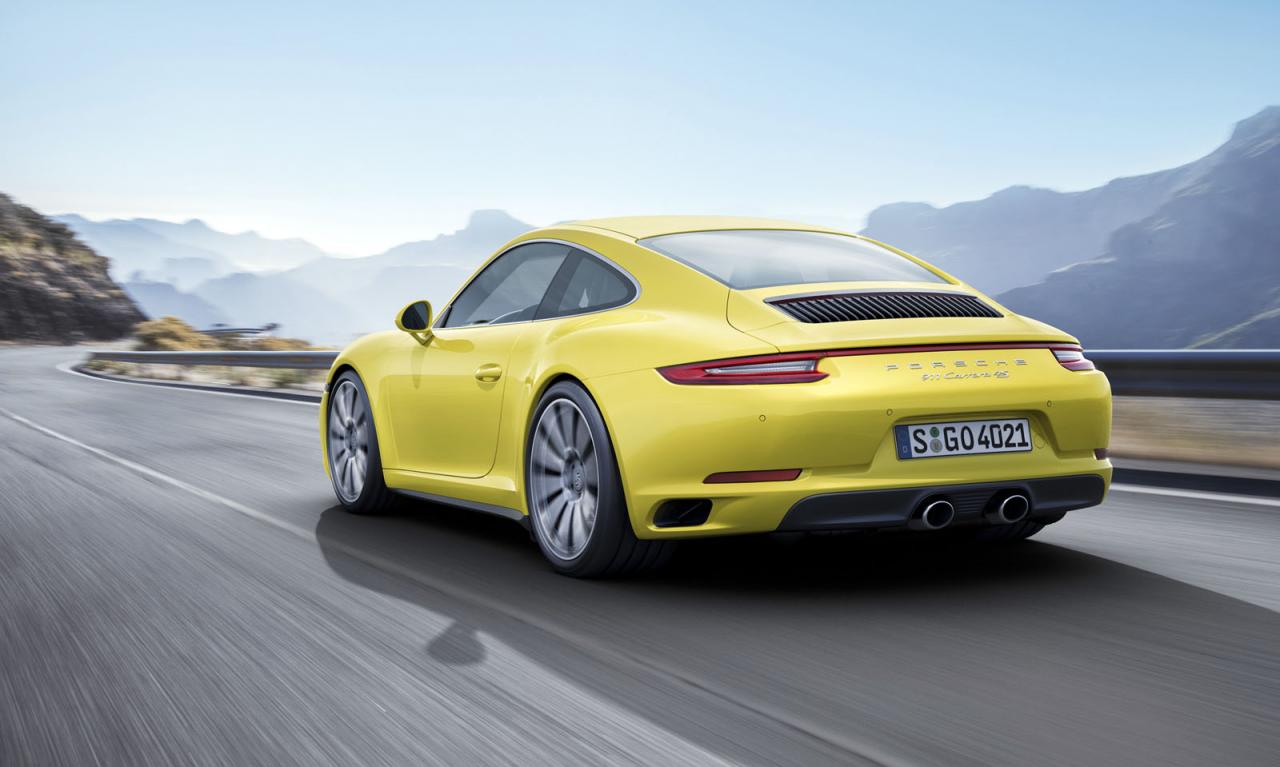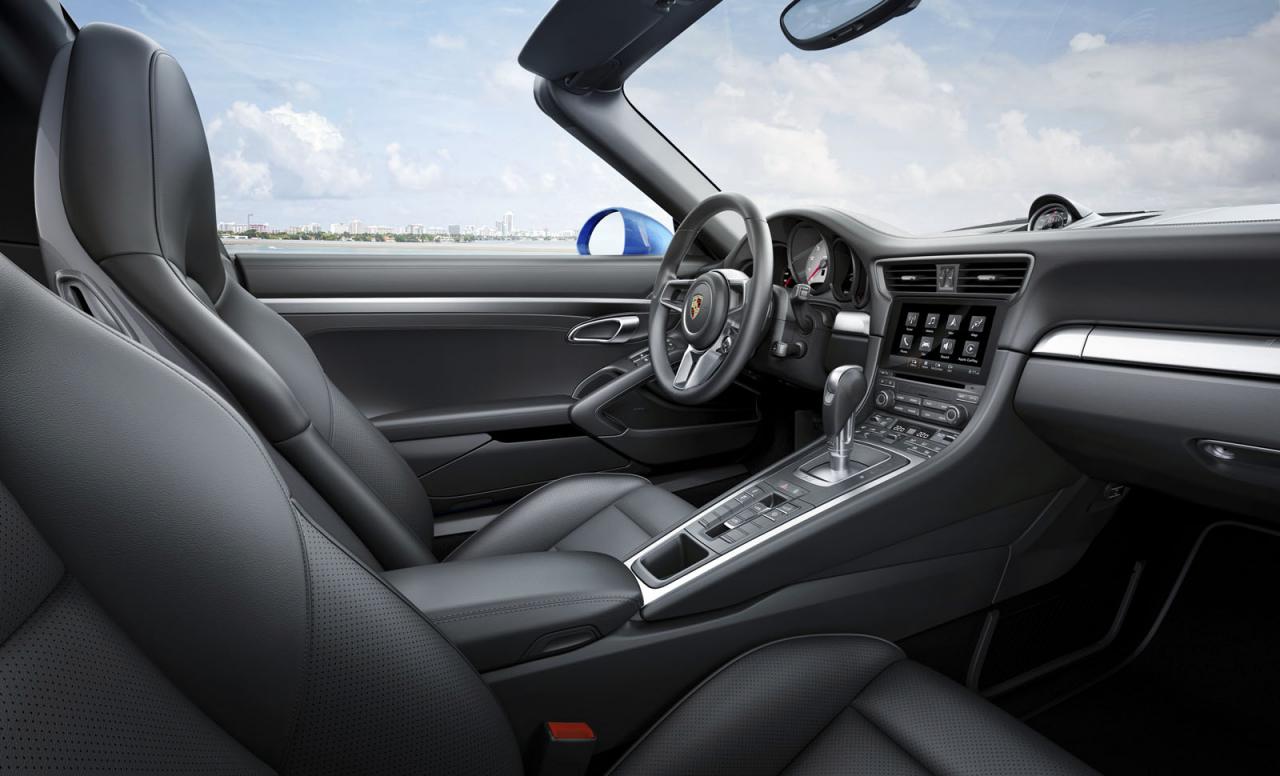Porsche debuted the new 911 Carrera and Carrera S about a month ago, and the twin-turbo flat-six that powers both is making its way up the 911 model range.
The 2017 Carrera 4, Carrera 4 Cabriolet, and Targa 4 (as well as the corresponding S versions of each) have made their official debuts online, and every member of the litter benefits from some version of the aforementioned 3.0-liter powerplant. Each gets a new electro-hydraulic all-wheel drive system as well, and for the first time, AWD variants are actually quicker than their rear-wheel drive counterparts.
In standard guise, the 3.0-liter makes 370 horsepower and 331 pound-feet of torque, which is good for a 0 to 60 sprint of 4.1 seconds in the Carrera 4 with the PDK and Sport Chrono package. The Carrera 4S gets a bump to 420 hp and 369 lb-ft, dropping the 0 to 60 figure to 3.8 ticks with equivalent equipment. Cabriolet and Targa models are a tad heavier, so acceleration times increase by 0.2 seconds all around — the time it takes to blink, according to Porsche.
In addition to the new AWD layout, the revamped Porsche Active Suspension Management system comes standard on all models, and it lowers ride height by 10 millimeters in the search for true cornering bliss. Rear-axle steering (which you can learn more about here) is also available on the Carrera 4S as an option.
Inside, functionality and connectivity have gotten a boost as the Porsche Communication infotainment suite is completely fresh. It now boasts a seven-inch multi-touch display, a navigation system with handwritten input capabilities, and functions like Google Street View and Internet radio.
U.S. pricing has not been released yet, but the Carrera 4 and Targa 4 family will be launched in Germany at the tail end of January 2016. The Carrera 4 will start at 103,983 euros ($116,977), the Carrera 4 Cabriolet and Targa 4 will both start at 117,073 euros ($131,703). S models tack on another 14,161 euros ($15,930).


